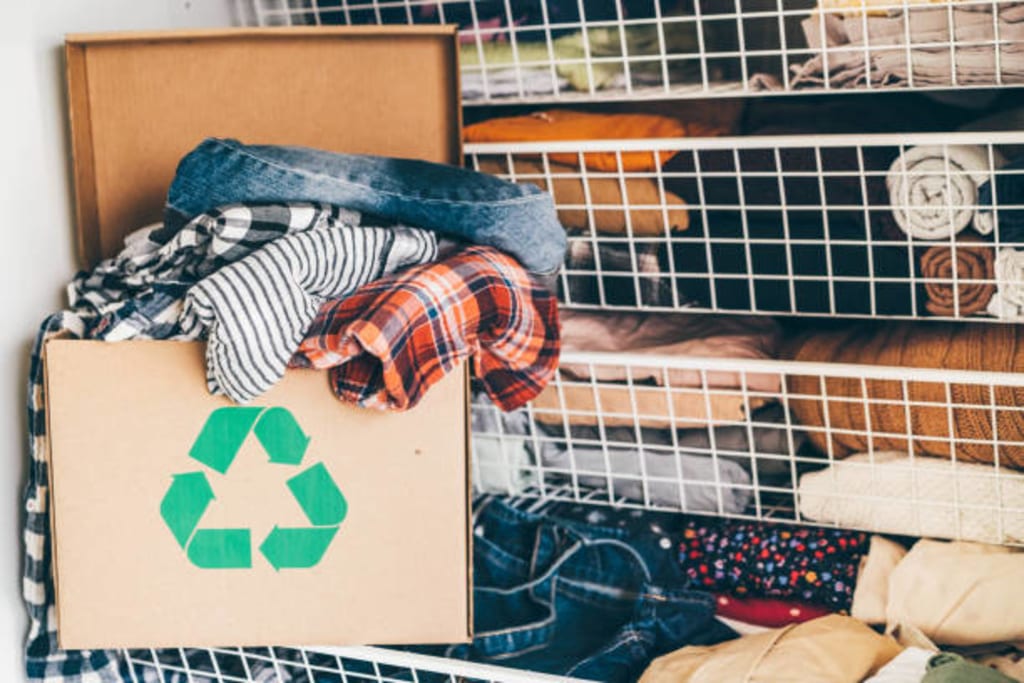Exploring Circular Fashion: Understanding the Concept of Clothing Recycling and Upcycling
Exploring the Concept of Clothing Recycling and Upcycling

In recent years, the fashion industry has witnessed a growing interest in sustainable practices. One concept that has gained significant attention is circular fashion. With the increasing awareness of the environmental impact of the fashion industry, there is a pressing need for innovative solutions that can reduce waste and promote a more sustainable approach to clothing production and consumption. In this article, we will delve into the concept of circular fashion, focusing specifically on clothing recycling and upcycling
1. What is Circular Fashion?
Circular fashion is a regenerative and sustainable approach to clothing production and consumption. It aims to eliminate waste, reduce the use of virgin resources, and keep products and materials in circulation for as long as possible. Unlike the traditional linear fashion model, which follows a "take-make-dispose" pattern, circular fashion advocates for a closed-loop system where resources are continuously reused, recycled, or upcycled.
2. The Importance of Clothing Recycling:
Clothing recycling plays a vital role in circular fashion. It involves collecting used garments, textiles, and accessories and transforming them into new products. By recycling clothing, we can divert textiles from landfills and reduce the environmental impact of the fashion industry. This section will explore the benefits of clothing recycling, including the conservation of resources, the reduction of greenhouse gas emissions, and the prevention of water pollution.
3. The Art of Upcycling:
While recycling focuses on breaking down materials to create new ones, upcycling takes a different approach. Upcycling involves repurposing and transforming old or discarded clothing items into new, unique pieces with higher value. It encourages creativity and craftsmanship while minimizing waste. This section will delve into the art of upcycling, highlighting inspiring examples and the positive environmental and social impact it can have.
4. Initiatives and Innovations in Circular Fashion:
Numerous initiatives and innovative practices are emerging within the realm of circular fashion. From clothing rental platforms and swap events to brands embracing closed-loop manufacturing, this section will showcase some of the most notable initiatives driving the circular fashion movement forward. It will also discuss technological advancements, such as digital solutions for tracking and tracing materials, which are revolutionizing the industry.
5. How Consumers Can Embrace Circular Fashion:
Consumers play a crucial role in transitioning to a circular fashion economy. This section will provide practical tips and guidance for individuals looking to embrace circular fashion in their everyday lives. From donating and swapping clothes to supporting sustainable brands and extending the lifespan of their garments through proper care, readers will discover actionable steps they can take to contribute to the circular fashion revolution.
Conclusion:
Circular fashion presents a promising alternative to the wasteful practices of the fashion industry. Through clothing recycling and upcycling, we can transform the way we produce, consume, and discard clothing, minimizing our environmental impact and fostering a more sustainable future. By understanding and actively participating in circular fashion, we can contribute to the shift towards a more regenerative and responsible fashion industry. Let us embark on this journey together, reimagining the lifecycle of our clothing and embracing a circular mindset. Furthermore, the article highlights the environmental benefits of circular fashion, such as reducing the consumption of virgin resources, minimizing pollution, and lowering carbon emissions. We also discuss the economic and social implications of embracing circular fashion, including job creation and the promotion of local economies.
To provide practical guidance, we share tips on how individuals can participate in circular fashion, such as donating clothing to reputable organizations, buying secondhand or vintage items, and supporting brands that prioritize recycling and upcycling in their production processes.
Ultimately, this article aims to inspire readers to reconsider their relationship with clothing and encourage them to embrace circular fashion as a sustainable alternative. By understanding the concept of clothing recycling and upcycling, individuals can contribute to the shift towards a more circular and environmentally conscious fashion industry.
About the Creator
Enjoyed the story? Support the Creator.
Subscribe for free to receive all their stories in your feed. You could also pledge your support or give them a one-off tip, letting them know you appreciate their work.





Comments
There are no comments for this story
Be the first to respond and start the conversation.